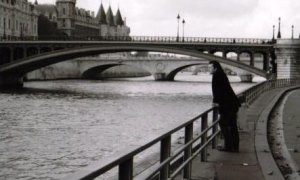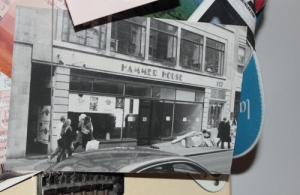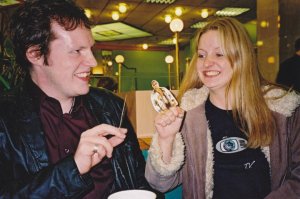Oh no. It’s February. Again. And the shops are filled with red tat. Cards. Teddy bears. Flowers. Meaningless declarations of love. How do I really feel? Fuck off Valentine’s Day.
Regular readers will know how much I loathe Love Day. Why put the effort into one day when you should be doing that for the other 364 days of the year? Why drag your partner to a restaurant to pay twice the price of any other day, in a goldfish bowl crammed with other couples.
I’m doing my best to stay out of the road of all things commercially sentimental, but its difficult when Tesco has given over as much floor space to this bullshit as it does to Christmas week. Shelves loaded with tackily tagged chocolates and cards and mugs and mops and wine and food and “buy this thing for a fiver that normally costs a quid cus its red and its Valentines’ week”.
I strongly advise against getting involved with anyone new between mid-November and mid-February. Winter is such a time of flux and if you don’t spend every penny you have on your new object d’amour then you could well find yourself on the scrap heap before your time. Buying stuff is not the way to find real affection and certainly not a real relationship. And if you’re doing it for the sex then you may as well look at it as prostitution, and I suspect a prostitute would be cheaper – certainly less emotionally testing.
I recall being in a dead relationship and still being compelled to write meaningless platitudes in a card because life would be a hundred times harder if I didn’t. Why put ourselves through such nonsense?
Thrusting ourselves into something new during the height of winter rather forces our hands. Rather than letting a relationship play out properly – some delicate dating, furtive fumbling, patient probing – we’re already thinking ‘Must buy expensive gifts’, making grand gestures, and before we’ve really decided if this is a medium-to-long-term thing or one of those couple-of-nights only affairs (a guest appearance rather than a residency). In that magnified microcosm how can we trust what’s going on? Simply we can’t.
Valentine’s Day falls on a Sunday this year which also means for many the most sinister of stalker traditions – the sending of the anonymous card loaded with clues to the object of one’s affection – becomes more difficult. We cannot depend on the world’s postal services to deliver on the day itself. Singletons like myself can now find comfort when the doormat once again screams with the absence of red envelopes. Of course if one does show up on the day it means somebody has dug out your address and stealthily made their way to your front door and squeezed the card through the last defence that is the impossible letterbox. I for one would much rather any potential love interest declared themselves in person at an appropriate time to my face, or take the safe option of writing via private message so embarrassment can be averted if there’s no mutual attraction.
When you think about it, Valentine’s Day simply serves to tell people that if you pursue someone armed with words and gifts and an expensive dinner then you’ll find love, or at least get laid. There’s no long-term strategy needed, no real care, and no respect of boundaries. One can overlook it a little in the instance of a long-term relationship – you’ve already captured your prey – but Valentine’s isn’t really for the stable, those who are as likely to do something nice in the privacy of their own home, it’s for those who are insecure, who need reminded to put effort in just to talk to their partner.
If nothing else, one has to be dubious about a day that takes as its mascot, Cupid: a rather rotund winged young boy dressed with only a smile and a bow and arrow. In other words, the worst sort of jailbait.





